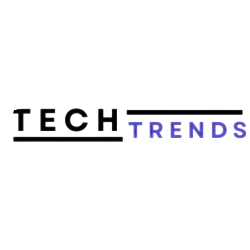What Is the Core Difference Between Omnichannel and Multichannel Marketing?
What Defines Omnichannel Marketing?
Omnichannel marketing delivers a unified customer experience across every touchpoint. It integrates all platforms, such as email, SMS, mobile app, in-store, and social media, to provide a personalized journey.
- Integrated channels ensure a consistent voice.
- Real-time data sharing powers personalization.
- Unified branding boosts loyalty and trust.
What Defines Multichannel Marketing?
Multichannel marketing uses multiple independent platforms. Each channel functions separately and targets a wider audience but lacks unified experience.
- Each channel has channel-specific campaigns.
- Communication remains product-centric.
- No real-time synchronization.
Why Understanding the Difference Matters for Your Business Strategy?
Your customer retention, engagement, and ROI depend on how you structure your marketing. Omnichannel strategies drive higher loyalty and conversions, while multichannel suits businesses aiming for quick reach without integration complexity.
How Does Omnichannel Marketing Work Across Channels?
Key Features That Make Omnichannel Unique
- Personalized messaging at every stage.
- Cross-channel engagement from awareness to retention.
- Real-time customer support integration.
Tools and Systems That Power Omnichannel Integration
- CRM platforms for unified profiles
- Marketing automation platforms like Omnisend
- Analytics tools for performance tracking
Steps to Build an Omnichannel Experience
- Collect behavioral data from all touchpoints
- Segment customers using data-driven personalization
- Design unified content across platforms
- Track performance via centralized dashboards
Benefits of a Seamless Customer Journey
- Higher conversion rates
- Boosted customer retention
- Deeper brand trust and lifetime value
Stat Insight: Customers interacting on 3+ channels make 250% more purchases than single-channel users.
How Does Multichannel Marketing Operate Independently?
Characteristics of Multichannel Strategy
- Broader reach through multiple platforms
- Different messages on each channel
- Easier to execute with fewer integrations
Channel-Specific Tactics for Audience Reach
- Social media for discovery
- Email for nurturing
- Retail for physical experiences
Examples of Multichannel Execution in Real Brands
- Apple uses separate strategies for retail, online store, and content platforms
- Campaigns operate independently for each channel
Pros and Cons of Multichannel Approach
Pros:
- Easy to implement
- Flexible content creation
Cons:
- Inconsistent branding
- Limited personalization
- Disconnected customer journey
Omnichannel vs Multichannel: Which One Offers Better Customer Experience?
Personalization: Real-Time Data vs Static Campaigns
Omnichannel uses real-time analytics to deliver targeted offers. Multichannel relies on manual segmentation.
Engagement Metrics: Which Strategy Retains More Users?
- Omnichannel: 89% retention rate
- Multichannel: Drops to 33% when touchpoints are not connected
Consistency and Brand Trust Across Touchpoints
Unified messaging builds trust. Disjointed messages reduce satisfaction and weaken brand loyalty.
What Are the Business Benefits of Omnichannel and Multichannel Strategies?
Sales Impact and Revenue Growth Potential
- Omnichannel customers spend 10% more online and 4% more in stores.
- Multichannel expands reach but lacks retention strength.
Customer Retention and Loyalty Metrics
Omnichannel delivers consistent experiences that increase trust. Customers prefer businesses that remember preferences across touchpoints.
Operational Costs and ROI Expectations
Omnichannel may require more upfront investment but offers higher ROI over time. Multichannel is budget-friendly but less scalable.
Use Cases in Retail, SaaS, and DTC Brands
- Nike uses an omnichannel app-store sync for smoother retail
- Netflix offers hyper-personalized viewing across devices
- Walmart integrates AR and ecommerce for a seamless buying journey
What Challenges Come with Omnichannel and Multichannel Execution?
Technology Stack and Data Synchronization
Omnichannel demands advanced tools and data integration. Multichannel can operate with basic marketing software.
Budget and Resource Allocation
Omnichannel needs more collaboration between teams. Training and planning must align across departments.
Privacy, Security, and Regulatory Compliance
Omnichannel collects and stores more data. GDPR and CCPA compliance is essential.
Team Training and Organizational Readiness
Every team—from support to marketing—must adopt shared objectives to execute omnichannel flawlessly.
Real-World Brand Examples of Omnichannel and Multichannel in Action
Nike’s Personalized Retail Experience
- In-store app features
- AI-based product suggestions
- Unified rewards via NikePlus
Apple’s Multichannel Product Promotion
- Separate campaigns for iStores, online store, and TV
- Product-centric focus with consistent aesthetic, not unified experience
Netflix’s Data-Driven Cross-Platform Personalization
- Synced watchlists across devices
- AI-driven suggestions
- Continuous journey across mobile, web, and TV
Walmart’s Unified Customer Retail System
- AR for product previews
- In-app and in-store syncing
- Investment in omnichannel innovation globally
How Do You Choose the Right Marketing Strategy for Your Business?
Define Business Goals and Customer Expectations
Choose multichannel for speed and flexibility. Choose omnichannel for consistency and customer depth.
Evaluate Your Data and Technology Capabilities
If you use a CRM and automation like Omnisend, you’re ready for omnichannel.
Align with Industry Standards and Competitive Landscape
Study your market. If competitors are integrating channels, omnichannel gives you the edge.
Start Small: Transition from Multichannel to Omnichannel
Connect two platforms first (e.g., email + in-store). Expand gradually using Camphouse or Omnisend.
Omnichannel vs Multichannel in Ecommerce and Retail: What Changes in 2025?
Ecommerce Strategy Evolution
AI and machine learning now drive personalization across touchpoints. Omnichannel will dominate conversion-focused ecommerce.
Omnichannel Retail Trends and Innovations

- Voice search integration
- AR-powered buying journeys
- Seamless app-store navigation
AI and Automation in Customer Experience
Marketing automation platforms centralize data, segment behavior, and automate touchpoints.
Voice, AR, and IoT Channel Expansion
Omnichannel strategies now include voice assistants, smart TVs, and in-car systems.
FAQs About Omnichannel vs Multichannel Marketing
How Long Does It Take to Implement Omnichannel?
It takes 6 to 18 months based on system complexity and team size.
Can Small Businesses Afford Omnichannel Tools?
Yes. Tools like Omnisend offer affordable starter plans.
What Metrics Should You Track for Each Strategy?
- Customer satisfaction
- Repeat purchase rate
- Cross-channel engagement
- Campaign ROI
Can You Combine Omnichannel with Multichannel Tactics?
Yes. Start with multichannel, then integrate gradually for a true omnichannel model.
Final Verdict: Which Marketing Strategy Should You Use?
Quick Comparison Table
| Feature | Omnichannel | Multichannel |
| Integration | Full | Independent |
| Personalization | High | Low |
| Data Sync | Real-Time | None |
| Customer Journey | Seamless | Fragmented |
| Cost | Higher | Lower |
| ROI | Higher Long-Term | Moderate |
Industry-Specific Recommendations
- Retail: Omnichannel
- SaaS: Omnichannel
- B2B: Multichannel to start
Summary Insights and Next Steps
If your goal is to scale customer experience, go omnichannel. If you need quick outreach without deep integration, choose multichannel.
Ready to Build a Future-Proof Marketing Strategy?
Tools That Help Implement Omnichannel Today
- Omnisend for ecommerce automation
- Camphouse for campaign mapping
How to Align Your Teams Around Unified Messaging
Train departments to use the same data sets and message flows.
Checklist to Get Started with a Seamless Marketing Plan
- Map customer journey
- Connect your top 3 channels
- Launch integrated campaigns
- Track and optimize with analytics
Trust Tech Trends, the best marketing agency, to lead your brand into the future. We build integrated marketing campaigns powered by automation, segmentation, and analytics. Our experts align your messaging across every platform and turn fragmented experiences into seamless conversions.
Book a consultation with Tech Trends and master omnichannel marketing today.




